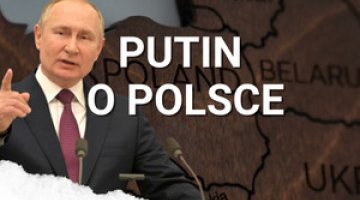Russia’s costly success: Nord Stream 2 construction is complete
On 6 September, Nord Stream 2 AG, which is 100% controlled by Gazprom, announced the completion of pipe laying for the second branch of the Nord Stream 2 (NS2) gas pipeline. On 10 June Gazprom confirmed that pipeline construction had been completed. Earlier, in June this year, the construction of the first line was finalised. It is currently being tested.
The fact that the pipe laying for Nord Stream 2 has been completed constitutes a major success for Russian energy policy, even though this was achieved more than two years late and over budget. The parties engaged in the project will have to face further challenges related to the commissioning of the gas pipeline, but there is no doubt that the Russian side will use political, economic and legal instruments to an increasing extent to not only launch but also to use the new pipeline in an unrestricted manner.
The bumpy road to success
The Nord Stream 2 project, inaugurated in June 2015, was completed more than two years later than planned. Originally, the company planned to lay the pipes between April 2018 and December 2019. Ultimately, the construction began in Finnish waters in September 2018 and was completed after nearly three years in September 2021. The delays also raised the project’s costs. Although its official budget was not to exceed EUR 10 billion, Sberbank’s analysts already in 2018 reported that the final costs could reach around EUR 14.5 billion. Ultimately, they will probably turn out to be even higher, if one takes into account the additional expenditure related to using their own vessels (the Fortuna barge, the Akademik Cherskiy pipe layer and auxiliary vessels) to complete NS2 construction.
The delay in the implementation of the project was one of the main reasons that forced Gazprom to conclude a new transit contract with Ukraine on terms that are more favourable to Kyiv. There are many indications that, if NS2 had been completed by the end of 2019, Gazprom would have had a greater chance of negotiating a shorter-term contract entailing smaller volumes of guaranteed transit.
There were several reasons for the delay in the implementation of the project. Due to the anti-monopoly proceedings initiated by the Polish Office of Competition and Consumer Protection, Gazprom was forced to terminate the specially created international consortium, which caused a delay of several months in the decision on financing the investment. The process of obtaining permits for the construction of the gas pipeline also took longer than the Russian side had expected. While by 2018 Nord Stream 2 AG had received permits to carry out construction works in German, Finnish, Swedish and Russian waters, the Danish government passed the decision regarding this matter only at the end of October 2019. Moreover, Denmark granted the construction permit only after the third application was submitted by the company; this was related to the Danish government’s reservations regarding the route of the gas pipeline in Danish waters. However, the American sanctions imposed in December 2019, which led to the suspension of work for nearly 12 months, had the greatest impact on the delay in the implementation of the project. Due to the restrictions imposed by the USA, any entities that were involved in the construction of NS2 risked being put on the sanctions lists, which in turn resulted in the interruption of pipe laying by the Swiss company Allseas.
Russia’s political success
The completion of Nord Stream 2 is a political success for Moscow. The project was announced and was being implemented during a period which saw the most strained relations between Russia and the West since the end of the Cold War, which came as a consequence of Russian aggression against Ukraine. The pipeline’s construction continued despite other political crises in Russia’s relations with Western countries after 2015, such as the poisoning of Sergei Skripal or the attempt to poison the Russian opposition figure Alexei Navalny followed by his imprisonment.
The announcement alone that a new export gas pipeline running from Russia to Europe would be constructed provoked serious political divides inside the EU, which was in line with the Kremlin’s strategic interest. Furthermore, the fact that the NS2 project became the subject of a dispute in transatlantic relations was also politically beneficial for Moscow. This was seen during Donald Trump’s presidency in relations between Washington and Berlin. After Joe Biden came to power and sanctions against this project were eased, it sparked tensions in US relations with Central and Eastern European countries.
Finally, the construction of Nord Stream 2, and previously of TurkStream, allows Moscow to implement one of the key objectives of its external energy policy set during Vladimir Putin’s rule, namely to reduce and ultimately completely eliminate Russia’s transit dependence on third countries, in particular Ukraine. Moreover, the new gas pipelines not only improve Moscow’s position in negotiations with Kyiv concerning energy issues, but are also becoming an instrument that Russia can use to negotiate political concessions with Ukraine.
More challenges for Gazprom
The completion of the construction of Nord Stream 2 is an important stage related to the implementation of this project, though it is not the final stage. Although representatives of the Russian government and Gazprom have over the past few weeks been announcing that the gas pipeline may be launched in 2021, it is not clear when these plans will be fulfilled. The Russian side is consistently contesting the restrictions imposed by EU energy law, in particular the amendment to the gas directive, but is taking steps to adapt to the applicable regulations. In June this year, Nord Stream 2 AG submitted an application to the German regulator for certification and being recognised as a gas pipeline operator. However, the decision has not yet been made, and the German regulator has announced that the procedure may even last until January 2022. It is also unclear whether – and if so, how – the Russian side has solved or intends to solve the problem of the certification of construction work carried out in 2021 in Danish waters. Obtaining the relevant certificates is necessary for the infrastructure to be put into operation. Furthermore, entities that can provide certification services for Nord Stream 2 are at risk of being subject to restrictions under the US sanctions imposed in January this year.
Another challenge is posed by the restrictions affecting the operation of the gas pipeline resulting from EU energy law. The gas directive, amended in April 2019, prevents Gazprom from acting as both gas supplier and infrastructure owner (the unbundling principle) and prohibits it from acting as a monopoly user of new infrastructure (the third-party access principle, TPA). The attempts Gazprom made in 2020 to exempt Nord Stream 2 from EU restrictions have not been successful so far. In May last year, the German regulator BNetzA refused the derogation, and then – after an appeal was brought against this decision – the German court in Düsseldorf upheld the decision by issuing a relevant ruling on 25 August this year.
What will Russia do?
The Russian side is determined to bring the new gas pipeline into operation as soon as possible after the construction is completed. This has been indicated by the political, economic and legal measures it has been taking.
Firstly, Moscow has for many months been exerting political pressure on its European partners, in particular Germany, with the aim of ensuring the rapid completion and launch of Nord Stream 2. The fact that the talks started and Berlin subsequently negotiated a political agreement with the US on the gas pipeline seems to be partially a result of these efforts. Although the content of the German-American communiqué does not directly indicate it, it is likely that Washington’s cautious approach to introducing further sanctions against the project may be part of the compromise, which will thus make the certification and launch of NS2 possible.
Secondly, Gazprom’s policy towards European gas consumers has been an instrument of political and economic pressure over the past few months. In July this year, the company withdrew from booking the annual capacity of the Yamal-Europe gas pipeline for the period from 1 October 2021 to 30 September 2022 and did the same for additional (exceeding that envisaged in the contract of December 2019) capacity of the Ukrainian gas network. Moreover, in recent months, despite the growing demand for gas in Europe, Gazprom has essentially limited its actions to meeting its contractual obligations and has not used the option of selling additional volumes of gas on exchanges. This was one of the factors leading to significant price increases. It is almost certain that Gazprom is hoping that the current unfavourable situation for gas recipients will induce some of its influential partners to be more assertive with regard to solving the regulatory problems of Nord Stream 2 (for more on the situation on the market, see ‘Gazprom’s pressure on Europe’).
Third, and lastly, Gazprom is taking further legal measures to neutralise the restrictions resulting from EU energy law. It is trying to contest the provisions of the amended gas directive both before the Court of Justice of the EU and the Arbitration Tribunal, questioning the compliance of EU regulations with the provisions of the Energy Charter Treaty. It cannot be ruled out that the unfavourable judgment of the court in Düsseldorf, refusing to grant derogation from EU law will be appealed in a higher German court. In addition, variants of possible attempts by Gazprom to circumvent EU regulations have been hinted at in publications specialising in the energy sector. It has been suggested that the Russian side may try to divide the gas pipeline into two parts so that the smaller one – a section accounting for approximately 4% of the total gas pipeline passing through German territorial waters – would be subject to the requirements of EU law (according to the provisions of the directive, it applies only to the section of the cross-border gas pipeline which runs through the territorial waters of the country where the pipeline ends). At the same time, at the present stage, it seems less likely that measures will be taken to solve the regulatory problems of NS2 by changing the law in the Russian Federation (curbing Gazprom’s export monopoly). In recent weeks, the Russian media reported another request from Rosneft, the country’s largest oil producer and exporter, for the right to export gas via the NS2 pipeline – this could help solve the problem resulting from the application of the third-party access principle. However, a decision of this kind would involve the risk of upsetting the balance between various interest groups in Russia and would make it necessary to take strategic decisions regarding the distribution of privileges and obligations in the Russian gas sector, which the Kremlin has so far tried to avoid.





